MANHUNT (2024) – Miniseries
The aftermath of the first American presidential assassination and the fight to preserve and protect the ideals that were the foundation of Lincoln's Reconstruction plans.

The aftermath of the first American presidential assassination and the fight to preserve and protect the ideals that were the foundation of Lincoln's Reconstruction plans.


Manhunt, an eight-episode miniseries, is a work of historical fiction with good intentions. The 1865 assassination of Abraham Lincoln, the 16th President of the United States, was one of the greatest tragedies in American history. The hunt for his assassin, stage actor John Wilkes Booth, is a story worth telling. The series also sets out admirably to evoke feelings of outrage, inspiration, and hope that resonates with our own troubled times, as the shadow of the Civil War still hangs over America nearly 160 years later.
Were good intentions sufficient, praise would indeed be warranted. Historical films that succeed as cinema, even when they alter events to suit the demands of narrative filmmaking and audience expectations—in some cases, with outright fabrications—include such beloved classics as John Ford’s My Darling Clementine (1946), David Lean’s Lawrence of Arabia (1962), and Warren Beatty’s Bonnie and Clyde (1967). Even screenwriter Tony Kushner and director Steven Spielberg adjusted events for Lincoln (2012).
Just last year, in 2023, Oppenheimer, Golda, and Killers of the Flower Moon all took liberties with historical facts to varying degrees. However, their flaws were overshadowed by their brilliance as films. They were so well-crafted and engrossing that to quibble about their accuracy risks being labelled a whingeing pedant or a killjoy. After all, film offers a world distinct from reality, and sometimes, it’s best to accept it on its own terms.
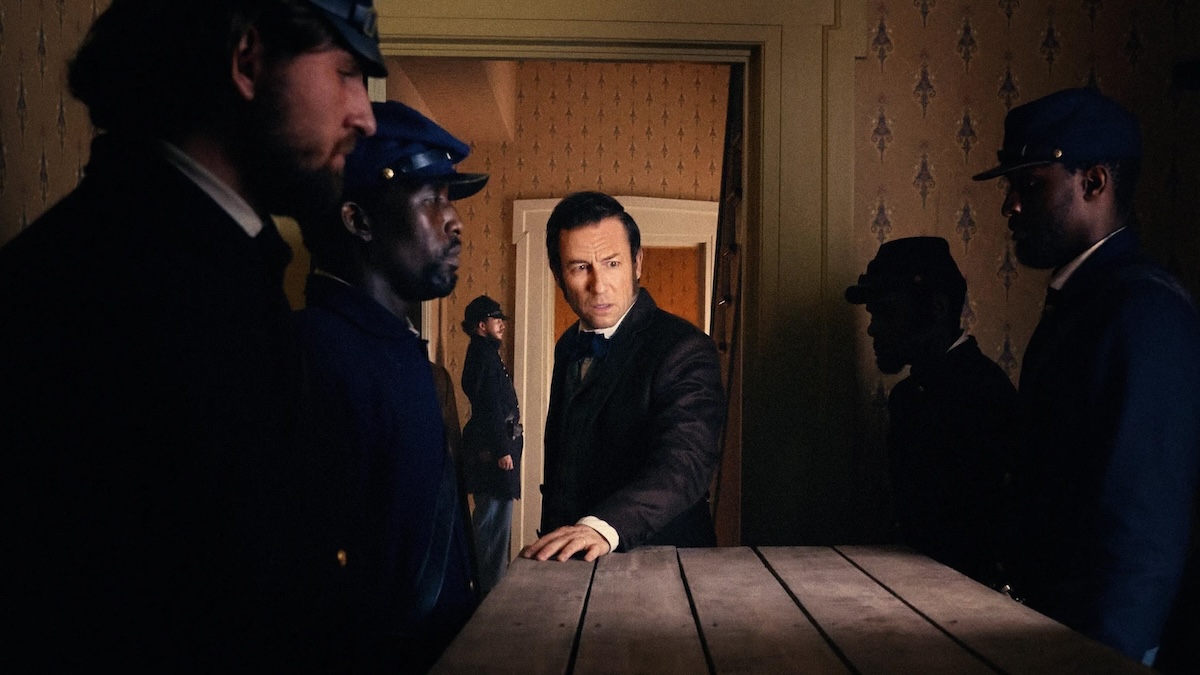
More often than not, however, this isn’t the case. For every Oppenheimer, there are films like Ridley Scott’s Napoleon (2023), Michael Bay’s Pearl Harbor (2001), and countless others. These are factual fictions whose execution is so flawed that it becomes more productive to discuss their historical inaccuracies. Lamentably, Manhunt falls into this category.
Manhunt’s first episode opens in the final moments leading up to the assassination of Lincoln on April 14, 1865, five days after the Civil War ended, leaving an estimated 600,000 dead. As both history and the series depict, Lincoln (Hamish Linklater) was just one of the targets in a vast plot to decapitate and overthrow the US government. It was both an act of revenge by Booth (Anthony Boyle) and his gang on behalf of the South and an attempt to reignite the Civil War. The other targets were US Secretary of State William H. Seward (Larry Pine), Vice President Andrew Johnson (Glen Morshower), and Union General Ulysses S. Grant.
As Booth closes in on his quarry, we flash back to episodes from Lincoln’s last day alive, exploring his deep friendship with his Secretary of War and closest political ally, Edwin M. Stanton (Tobias Menzies). We also meticulously follow Booth’s last-minute scheming as he gathers his ragtag band of Confederate terrorists. By modern standards, it’s both astonishing and alarming to see how these plotters, who appear to be a bunch of losers, manage to get as far as they do. (For example, security for US presidents back then was largely ad hoc. The most powerful men in America went about with only minimal protection.)
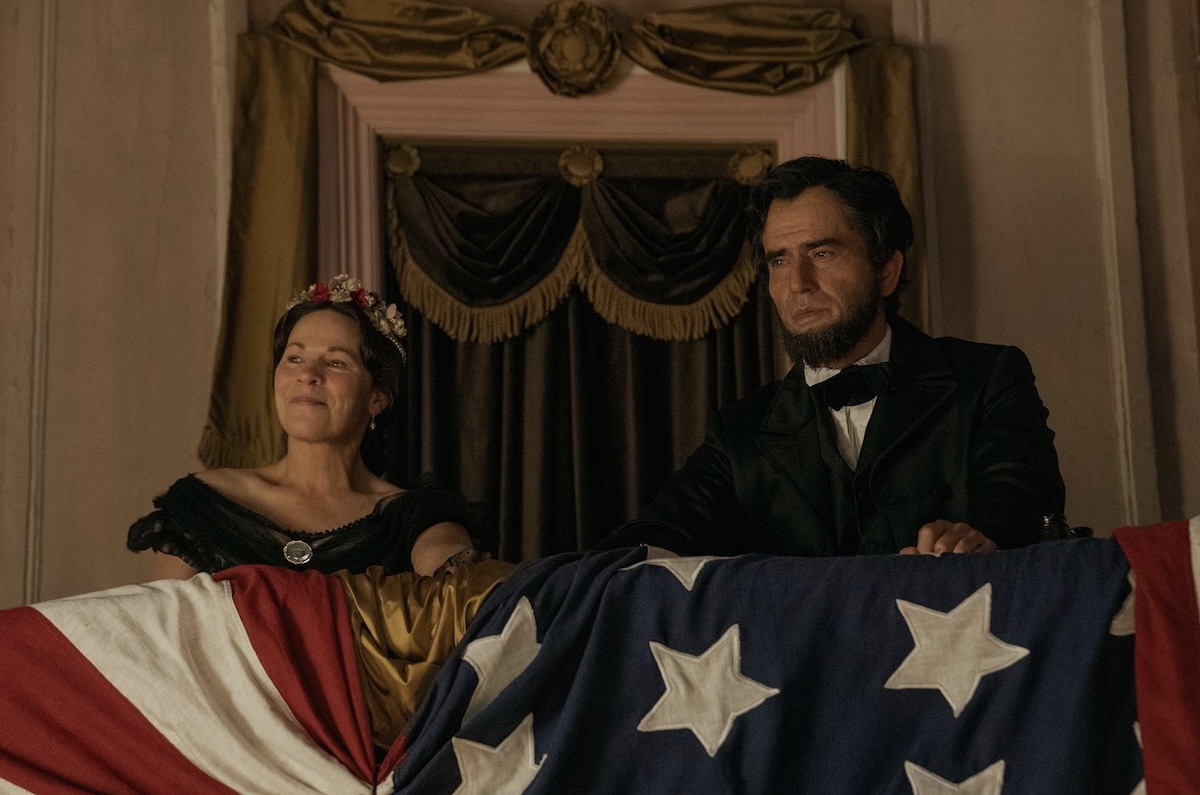
Lincoln’s assassination is thrillingly staged by director Carl Franklin. It’s a well-shot and dynamically edited sequence, interspersed with the attempted murders of Seward and Johnson (which took place within the same hour). By the end of episode one, Lincoln is dead, and Booth, with a broken leg, has galloped off into the night through the Maryland countryside with his trusted co-conspirator, David Herold (Will Harrison), as his guide.
The action ought to intensify further in the second episode, but instead, it settles into a lengthy procedural drama that could be called CSI: 1860s Washington D.C. Edwin M. Stanton (who, in real life, was in his fifties, overweight, and in poor health, with a large beard) is transformed into Edwin Stanton: Crime Fighter. But even with Stanton as the central character, the investigation is uninteresting, partly because forensic science was in its infancy, relying heavily on eyewitness accounts and mostly evident clues. There’s no ‘a-ha!’ moment, no thrill of discovery. The show simply plods along.
Manhunt draws from James L. Swanson’s poorly written but absorbing nonfiction novelization Manhunt: The 12-Day Chase for Lincoln’s Killer. Based on my reading of that book, weird details and missed opportunities abound in this adaptation. Some genuinely dramatic real-life incidents are whitewashed or neglected while one of the remaining mysteries, the eighteen pages missing from Booth’s diary, is given a stunningly preposterous solution.
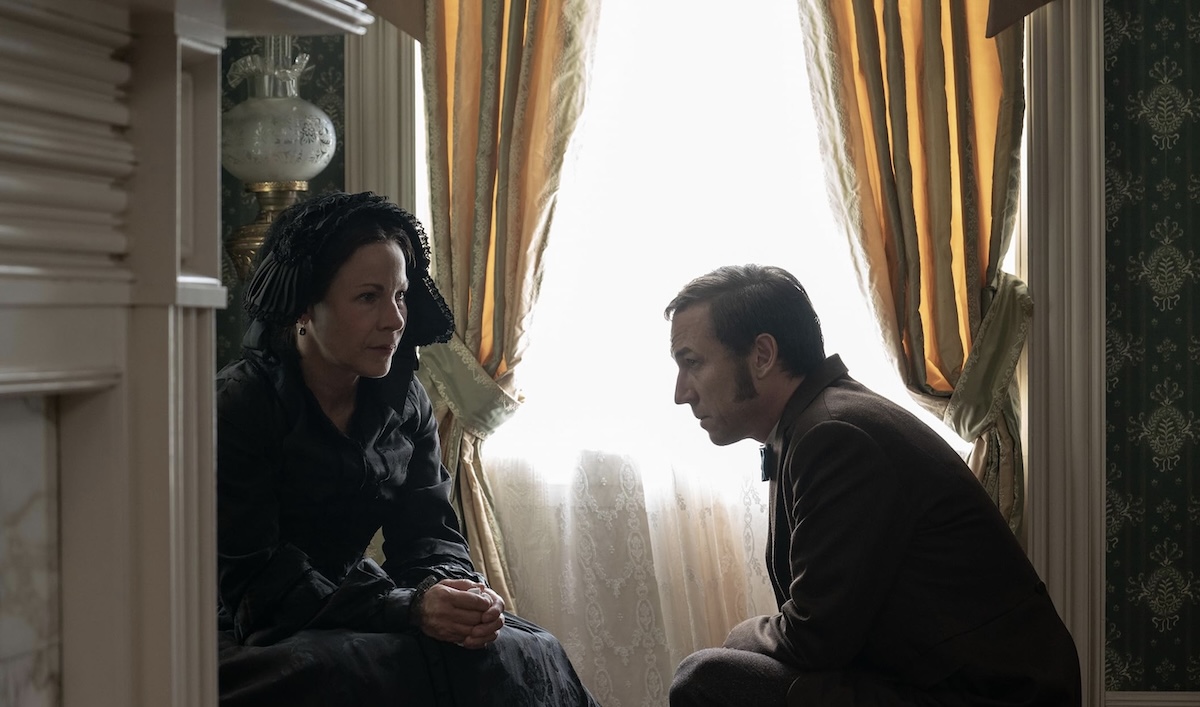
In the immediate aftermath of the assassination, Stanton assumed the role of acting president. Commanding the hunt for the conspirators from his position, he delegated the legwork itself to others. Showrunner and co-writer Monica Baletsky could have created a composite character from amongst his subordinates, the ones truly pursuing the culprits, to tighten the narrative focus. However, she throws Stanton right into the thick of the action, right up to his starched collar.
Manhunt portrays Edwin M. Stanton as an asthmatic workaholic, a Sherlock Holmes on horseback who follows a trail of clues leading from the Deep South to Montreal, Canada. While galloping around Washington, Maryland, and into Virginia, he also finds time to work energetically behind the scenes in Washington, particularly in persuading the inexperienced and untrustworthy Andrew Johnson to carry out Lincoln’s Reconstruction plans. Along the way, he also manages to squeeze in a few minutes for Lincoln’s funeral arrangements. Stanton seems to have been a genuinely great man, but here he almost comes across like a comic-book superhero, leading me to anticipate a mano a mano showdown between him and Booth at the end. Thankfully, that never transpires.
With a total of eight screenwriters, the series feels like overstretched fabric. In addition to anachronistic dialogue, there’s some narrative padding and lame contrivances. Among these is a Reconstruction story featuring Mary Simms (Lovie Simone), the house slave of Dr Samuel Mudd (Matt Walsh), the co-conspirator who helped Booth escape by treating his broken leg.
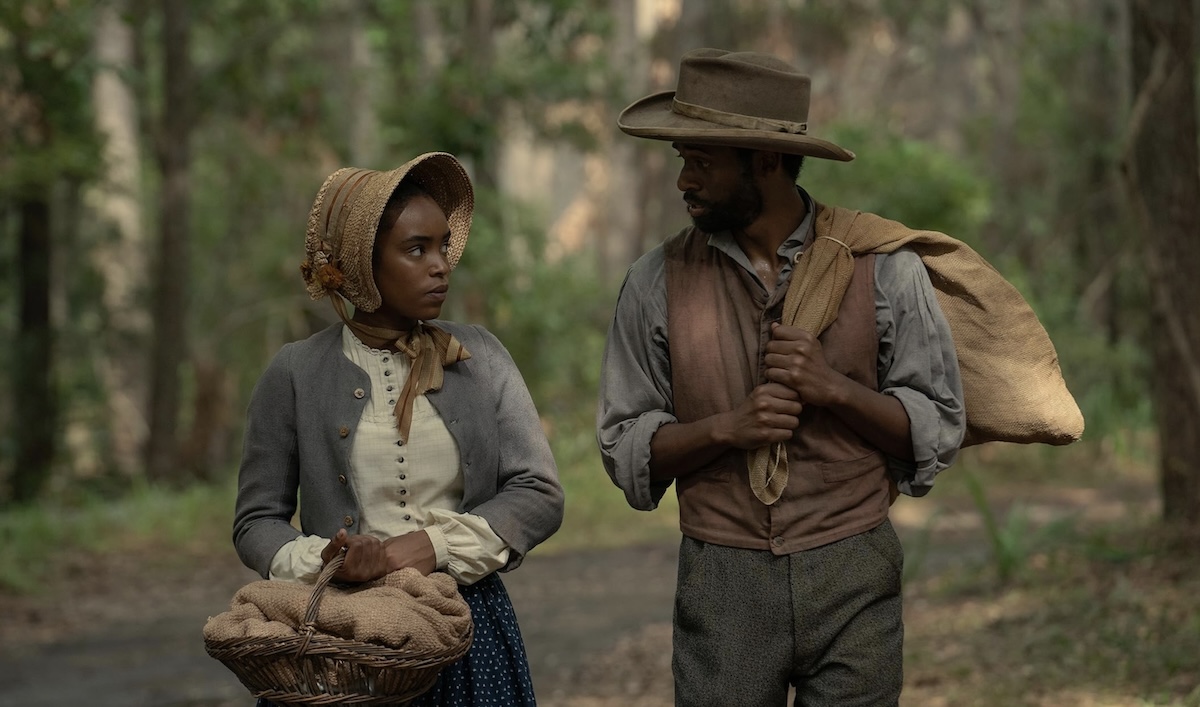
There’s little sense of either triumph or relief when Booth is finally apprehended. His death scene feels rushed, wasting Anthony Boyle’s excellent performance as Booth. And instead of ending there, another episode is added to hurriedly dramatise the trial and execution of the other conspirators, along with Stanton’s feud with Johnson. At eight episodes, Manhunt feels longer than the 12 days it took to track down Booth. Four episodes might have been enough to create, perhaps not the epic it aspired to be, but a taut story with real punch.
Manhunt does have its merits. These include the direction by two veterans, Carl Franklin and John Dahl, alongside Norwegian director Eva Søhl. The cinematography by Robert Humphries and Trevor Forrest is atmospheric and sumptuous, while the production design, costumes, and sets appear reasonably authentic (although this series’ version of Ford’s Theatre doesn’t quite match up with historical photographs).
As for the acting, it’s all over the place. Anthony Boyle steals the show, spitting real fire as John Wilkes Booth. He superbly portrays Booth as both a vicious racist fanatic and a vain, insecure actor who hungrily scans the newspapers for glowing reviews calling his vile deed a crowning career performance that will make him a star more famous than his more accomplished father, Junius, and his brother, Edwin. In a nice touch of humour, his fans all praise him but can’t resist pointing out how short he is. To him, killing Lincoln would have made him taller.
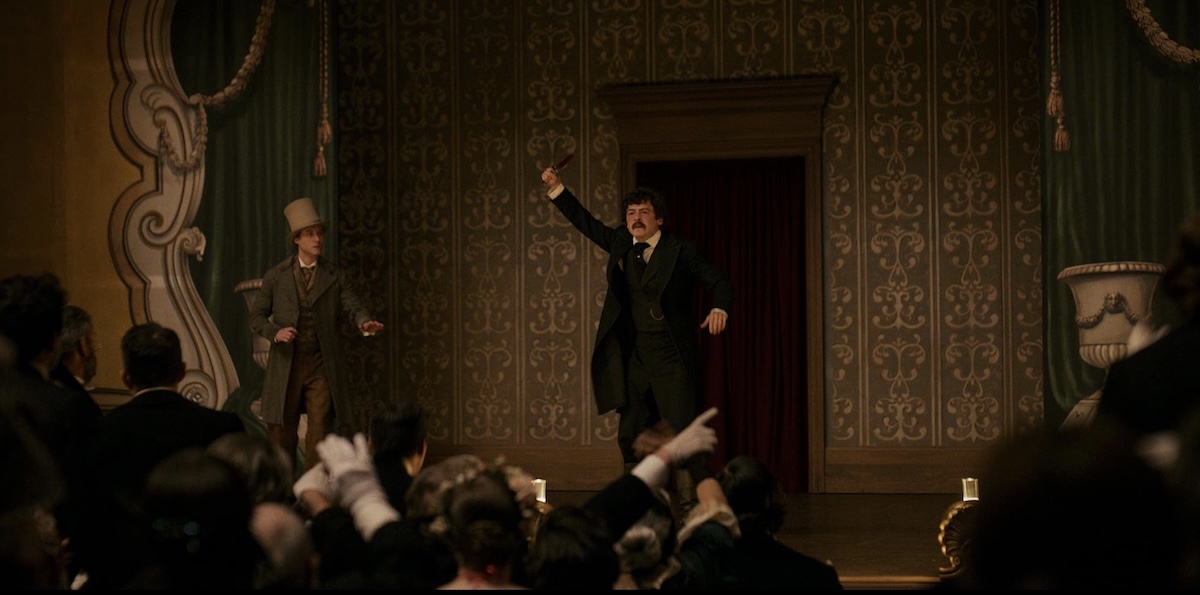
Despite being miscast in a poorly written role, Tobias Menzies (Outlander) delivers an excellent performance as Edwin M. Stanton. Menzies has consistently impressed with his work across numerous television shows, films, and theatre productions. Miscasting is a risk all actors face, but a mark of a good performer is their ability to retain dignity in a poorly conceived role, which Menzies achieves here.
Most of the remaining cast does fine, but not all. For one, there is the inexplicable casting of comic actor/writer Patton Oswalt as Lafayette Baker, one of the military investigators, to contend with. Oswalt certainly has his virtues, but his performance here seems like a jarring act of cosplay that further throws things off.
Hamish Linklater (Midnight Mass) doesn’t just fall short of Daniel Day-Lewis’s portrayal of Abraham Lincoln; there’s a vast gulf between them. The most iconic photograph of Lincoln, taken the month before his death, portrays his face as haggard and weary, etched with the terrible burdens he’d carried for four long years. Linklater’s Lincoln, on the other hand, looks fresh-faced, as if just out of Harvard University, without a grey hair or wrinkle in sight. While he captures Lincoln’s high-pitched, scratchy voice, Linklater is far too short and utterly lacks Lincoln’s gravitas and wit. He almost relegates the late president to a background character in his own story.
No portrayal will ever get any historical personage, including Abraham Lincoln, right, but by casting the wrong actor to play him, Manhunt doesn’t even seem to be trying.
USA | 2024 | 8 EPISODES | 16:9 HD | COLOUR | ENGLISH

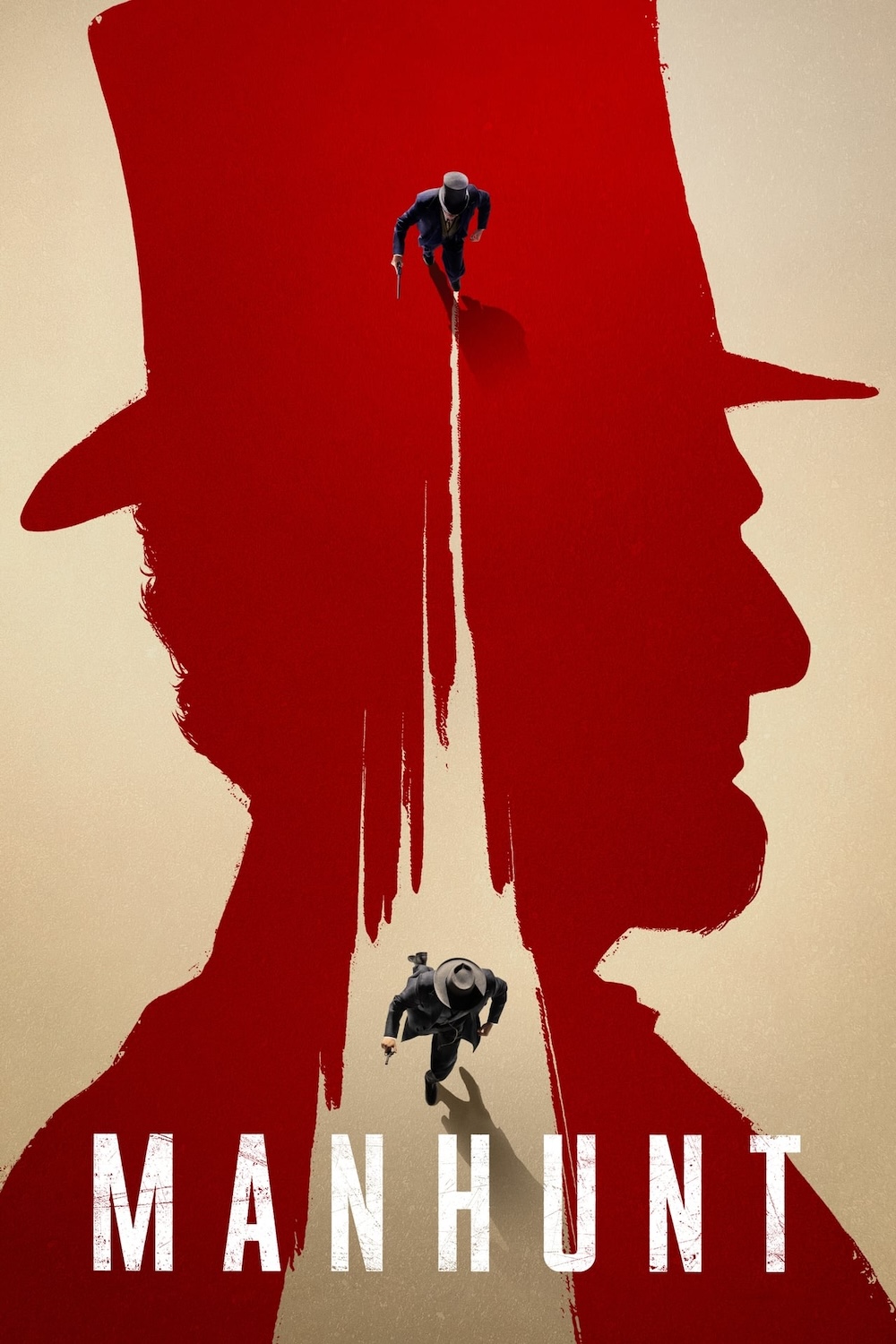
writers: Monica Beletsky, Matt Johnson, Ben H. Winters, Tim Brittain, Matthew Fennell & Jan Oxenberg (based on the book ‘Manhunt: The 12-Day Chase for Lincoln’s Killer’ by James L. Swanson).
directors: Carl Franklin, John Dahl & Eva Sørhaug.
starring: Tobias Menzies, Anthony Boyle, Lovie Simone, Will Harrison, Brandon Flynn, Damian O’Hare, Glenn Morshower, Patton Oswalt, Matt Walsh & Hamish Linklater.
